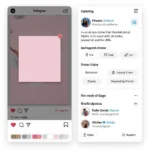Mood rings, those fun pieces of jewelry we often associate with the 70s, have made a comeback in recent years. These rings feature a stone that changes color, supposedly reflecting the wearer’s mood. But have you ever stopped to wonder what the different colors on a mood ring actually mean?
 Mood Ring Color Chart
Mood Ring Color Chart
The Science (or Lack Thereof) Behind Mood Rings
Before we delve into the meaning behind each color, it’s important to understand how these rings work. Mood rings don’t actually possess any mystical ability to read your emotions. The color-changing effect is a result of thermochromic pigments embedded within the stone. These pigments are sensitive to temperature fluctuations, causing them to twist and reflect different wavelengths of light, leading to the color change.
So, while a mood ring might reflect your body temperature, it’s not necessarily an accurate gauge of your emotions. A rise in body temperature could be due to excitement, yes, but it could also be from a fever or simply being in a warm room.
Deciphering the Language of Mood Ring Colors
While the science behind mood rings might be simple, the color symbolism attached to them is a bit more complex. Here’s a general guide to what the different colors on a mood ring are often associated with:
Cool Colors: Calm and Collected
- Dark Blue/Purple: This color often represents feelings of calmness, serenity, and peace. It can also indicate relaxation, contentment, and being in a meditative state.
- Blue/Green: This transitional shade typically signifies a balanced emotional state. You’re feeling calm, collected, and generally at ease.
Warm Colors: Passion and Energy
- Green: This vibrant color is often associated with an average mood. You’re feeling good, things are going well, and life is generally pleasant.
- Yellow/Amber: As the colors warm up, so do the emotions. Yellow and amber typically reflect happiness, excitement, and creativity.
- Orange: Orange is often linked to feelings of passion, enthusiasm, and energy. It can also indicate a sense of adventure and excitement.
- Red: This fiery hue is often associated with strong emotions like love, passion, anger, or stress.
Other Colors and Their Interpretations
- Black/Gray: These dark shades often symbolize negative emotions such as stress, anxiety, sadness, or even illness.
- Brown: Brown can indicate a state of confusion, uncertainty, or feeling overwhelmed.
Mood Rings: Fun Fashion or Emotional Barometer?
While mood rings shouldn’t be taken as a literal reading of your emotions, they can be a fun conversation starter and a unique fashion accessory. They can also serve as a reminder to be mindful of your body and how it reacts to different situations.
Remember, your emotions are far too complex to be summed up by a simple color change. But if wearing a mood ring brings a smile to your face, then why not embrace the fun and mystery of it?

